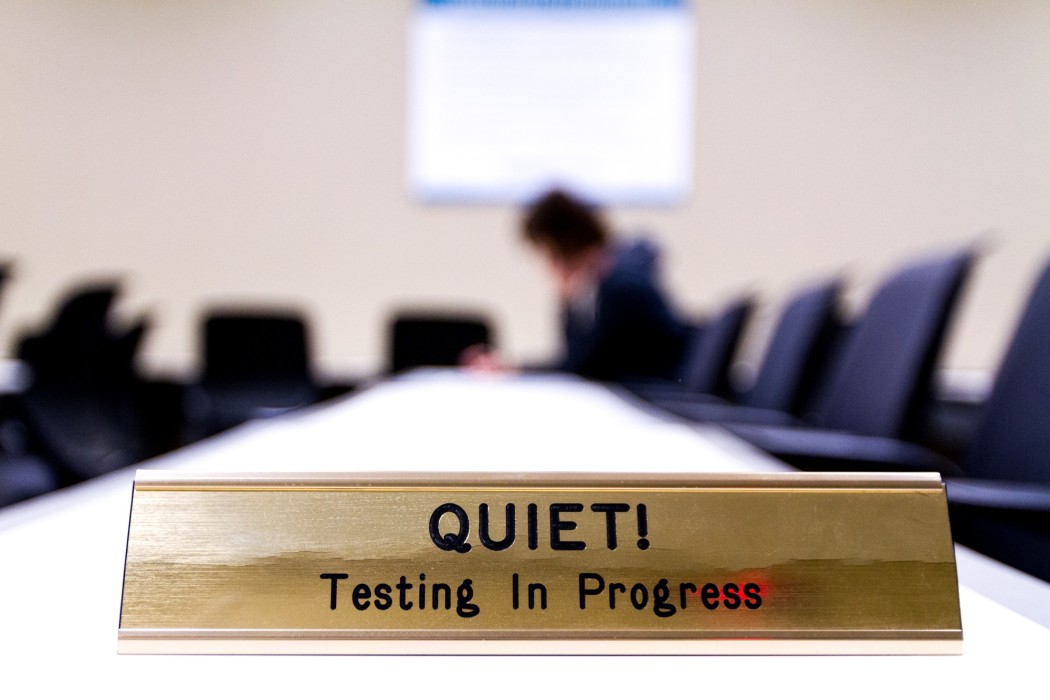Effects of more information + assessment = solution in progress
With information more readily available, everyone is moving into a world that demands problem solving skills over rote memorization and one that requires students to develop more targeted skills. Because these skills are often developed within higher education, the question becomes: what changes need to be implemented in higher education’s often regurgitative-based assessment style?
“This has become a culture that is information-rich and wisdom-starved. Learners (in higher education), employees (in the workforce) and consumers/patients (in business) no longer seek information but instead want help deciphering the wealth of data and opinions,” said Joseph Brimhall, president of the University of Western States and chairman of the Northwest Commission on Colleges and Universities (NWCCU) that accredits over 160 western colleges and universities.
And Brimhall believes there are some specific practices that could achieve such objectives.
“Assessments should be competency-based evaluations, not simple regurgitation of information or even knowledge. Demonstration of skills and attitudes is essential to validate that the student is capable of applying knowledge,” he said.
But with respect to advances in assessment here at Utah State University, there are some teachers far ahead of the curve. Those who observe one of Scott Findley’s economics classes on test day will find quieter-than-normal students, scantrons, laptops, tablets and open books. In his class, students are allowed and encouraged to use all resources available to them on tests, save one another.
“You’re going to be given the opportunity to solve problems using tools that are at your disposal as an employee. So that’s my objective. I’m much more interested in assessing and testing the ability to reason through a problem and to design a logical structure to answer a problem,” Findley said.
While such opinions and teaching methods remain almost unanimously uncontested by individuals in higher education and the job market, there have been hiccups in establishing such policies universally.
Ryan Thomas has served as the president of the College of Eastern Utah, the Dean of Undergraduate Studies at Weber State University and on the NWCCU. While serving as an administrator, Thomas also taught classes, putting large emphases on research, written and oral communication skills and project-based assessment.
“The current teaching and general education reforms are sometimes at odds with some elements of the assessment movement. The teaching reforms and general education reforms in this country have principally focused on coherence, guided student exploration and relevance. In contrast, the U.S. assessment reforms have been driven by two major influences, both of which emphasize similarity,” Thomas said, in regard to the assessment landscape.
He explained that the reason U.S. reforms have been driven by similarity is for the purpose of transferability as well as the hope to legitimize federal financial aid. Understanding the effects of assessment reforms is important.
“These efforts, at their best, ensure common sets of learning objectives. At their worst, they may lead to a loss of distinctiveness in the education provided by a particular institution,” Thomas said. “Higher education and accreditation bodies have all felt pressure from the federal government to increase assessment of ‘legitimacy’ rather than learning.”
However, in the last few years, progress has been made toward expanding the scope of assessment and redefining student learning to coincide better with employers’ expectations. Thomas cited large progress from accreditation bodies, including the NWCCU. He said in a recent NWCCU meeting, one of the most important messages for institutional representatives was that self-evaluation reports focus primarily on student learning, as this is the fundamental reason for the existence of the institution.
Another factor to consider is that in order for advancement in assessment, some students must reform their views of education and engage learning in a manner that isn’t as easy as regurgitative methods.
Considering his assessment methods and students, Findley said, “I think one of the reasons exams are what they are, when it comes to the difficulty, is simply because a lot of students are conditioned to just memorize and when they have to take an exam where they didn’t have to memorize, they are struggling.”
However, difficulty is not his objective. Rather, like most in higher education, his objective is to give students the resources needed to be successful in the real world and to optimize their education at Utah State. But developing these skills and optimizing education is mostly incumbent on students.
“Students will need to take more responsibility in gathering information and storing knowledge … Learning must eventually become self-motivated, and the student must gain an appreciation for the concept that lifetime learning is a necessity, not just an elective,” Brimhall said.
It is clear that technology and the information age will leave no sector untouched, especially higher education. Despite slight differences in methodology, what is clear is that assessment and learning are evolving away from rote memorization, towards problem solving, critical evaluation of information and greater student responsibility.
— jack_brimhall@yahoo.com, @jack_brimhall96

